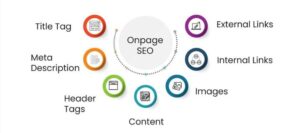Top SEO Techniques That Will Work in 2025
Search Engine Optimization (SEO) is evolving rapidly, and 2025 promises to be a pivotal year. With constant algorithm updates, advancements in AI, and changing user behaviors, SEO strategies must adapt or risk becoming obsolete.
Whether you’re a digital marketer, business owner, or content creator, staying ahead of the curve is essential. Here are the top SEO techniques that will dominate in 2025, based on emerging trends, current algorithm patterns, and industry expert predictions.

1. AI-First Content Optimization
Artificial Intelligence is transforming how search engines understand and rank content. Google’s AI systems like RankBrain, MUM, and the Search Generative Experience (SGE) prioritize content that aligns with user intent, context, and semantic relevance.
What to do:
-
Use AI tools (like ChatGPT, SurferSEO, or Clearscope) to create topic-rich, semantically relevant content.
-
Focus on user intent over keyword stuffing.
-
Optimize for natural language queries, not just exact match keywords.
2. Helpful Content & E-E-A-T Optimization
Google’s Helpful Content System and its emphasis on E-E-A-T (Experience, Expertise, Authoritativeness, Trustworthiness) are here to stay.
What to do:
-
Create original, experience-based content (e.g., first-hand reviews, case studies, tutorials).
-
Show author credentials and backlinks from reputable sources.
-
Avoid fluff. Focus on depth, accuracy, and clarity.
3. Voice Search & Conversational Queries
By 2025, over 60% of searches are expected to be voice-based. This trend favors long-tail keywords, conversational content, and featured snippets.
What to do:
-
Optimize for questions and answers (e.g., “How do I fix a slow website?”).
-
Use schema markup to enhance visibility in voice search.
-
Structure content with clear subheadings and concise answers.
4. Video SEO is More Critical Than Ever
Video continues to dominate digital content. Platforms like YouTube and TikTok are not just social tools—they’re powerful search engines in their own right.
What to do:
-
Create high-quality video content around searchable topics.
-
Optimize titles, descriptions, and tags using relevant keywords.
-
Add closed captions and transcripts to improve accessibility and SEO.
Bonus Tip: Embed videos in blog posts to boost dwell time and engagement.
5. Core Web Vitals & UX Signals
In 2025, user experience metrics like Core Web Vitals are still key ranking factors. These include:
-
LCP (Largest Contentful Paint)
-
FID (First Input Delay)
-
CLS (Cumulative Layout Shift)
What to do:
-
Improve site speed (via caching, image compression, and CDNs).
-
Ensure mobile responsiveness and intuitive navigation.
-
Avoid intrusive popups or layout shifts that frustrate users.
6. Search Generative Experience (SGE) Optimization
Google’s SGE integrates AI-generated answers into the top of search results. This reshapes how visibility works in the SERPs.
What to do:
-
Create comprehensive, authoritative content that AI might reference.
-
Focus on topical authority, building clusters of content around core subjects.
-
Use FAQs and structured data to increase chances of being cited by AI summaries.
7. Zero-Click Content Strategy
Zero-click searches (where users get answers directly in the SERP) are rising. While it reduces traditional traffic, branding and authority still grow from these results.
What to do:
-
Optimize for featured snippets, People Also Ask, and knowledge panels.
-
Use clear, concise formatting: tables, bullet points, and definitions.
-
Brand your content and URLs so users associate the answer with you.
8. Topical Authority > Just Keywords
Google favors websites that show depth and expertise in a topic, not just one-off posts.
What to do:
-
Build content hubs (pillar + cluster model).
-
Interlink related articles using semantic anchor text.
-
Focus on topic coverage, not just keyword targeting.
9. Mobile-First and Multimodal Optimization
Over 70% of traffic is mobile. Google uses mobile-first indexing, and multimodal search (images, text, video combined) is growing.
What to do:
-
Use responsive design and test across devices.
-
Optimize images with alt tags and structured metadata.
-
Embrace visual search optimization (Google Lens, Pinterest, etc.).
10. Localized & Hyperlocal SEO
Location-based searches remain crucial, especially for small businesses and service providers.
What to do:
-
Keep your Google Business Profile updated.
-
Use local schema markup and add your business to local directories.
-
Create content tailored to local events, neighborhoods, or city-based keywords.
Conclusion: Future-Proofing Your SEO Strategy
SEO in 2025 is about more than just ranking—it’s about visibility, authority, and user satisfaction. The search landscape is shifting from keyword-centric to intent-driven and AI-enhanced, requiring smarter, more strategic content creation.
By staying on top of trends like AI content optimization, video SEO, voice search, and user experience, you can ensure your site remains visible and valuable in the evolving digital ecosystem.
Pro Tip: SEO is no longer a one-time effort. Commit to continuous learning, testing, and adapting. Monitor algorithm updates, follow SEO thought leaders, and use data-driven insights to refine your strategy.
